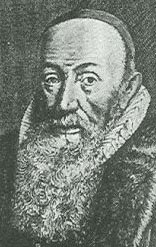Plancius, Petrus (1552–1622)
Petrus Plancius was a Dutch astronomer, cartographer, and theologian who, on the occasion of the
first Dutch expedition to the East Indies, in 1595, asked Pieter Keyzer
(1595–?) , the chief pilot on the Hollandia, to make observations
to fill in the blank area around the south celestial pole on European maps
of the southern sky. Keyser died in Java the following year, but his catalogue
of 135 stars arranged in 12 new constellations (some perhaps acquired from the myths of local peoples), prepared with the
help of explorer-colleague Frederick de Houtman, was delivered to Plancius,
who inscribed the new constellations on a globe he prepared in 1598. Keyser
and de Houtman's constellations are Apus the Bird of Paradise, Chamaeleon,
Dorado the Goldfish (or Swordfish), Grus the Crane, Hydrus the Sea Monster,
Indus the (American) Indian, Musca the Fly, Pavo the Peacock, Phoenix, Triangulum
Australe the Southern Triangle, Tucana the Toucan, and Volans the Flying
Fish. These constellations, together with three other new ones added by
Plancius himself, Camelopardalis, Columba, and Monoceros, were then incorporated
by Johannes Bayer in his sky atlas, the Uranometria,
in 1603.
 |


